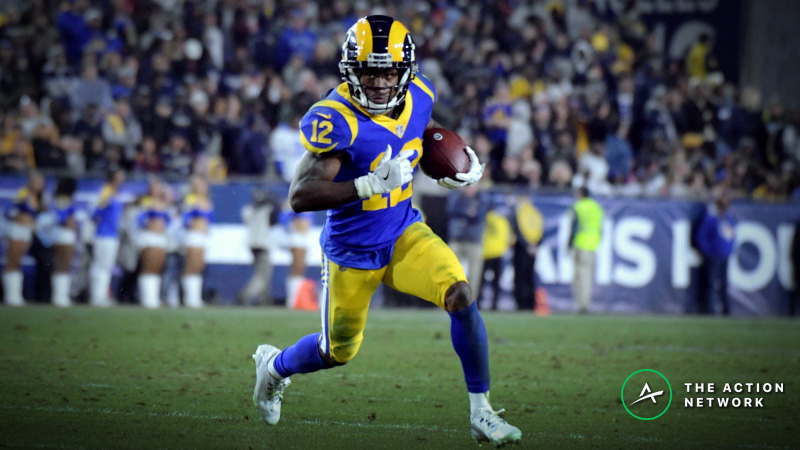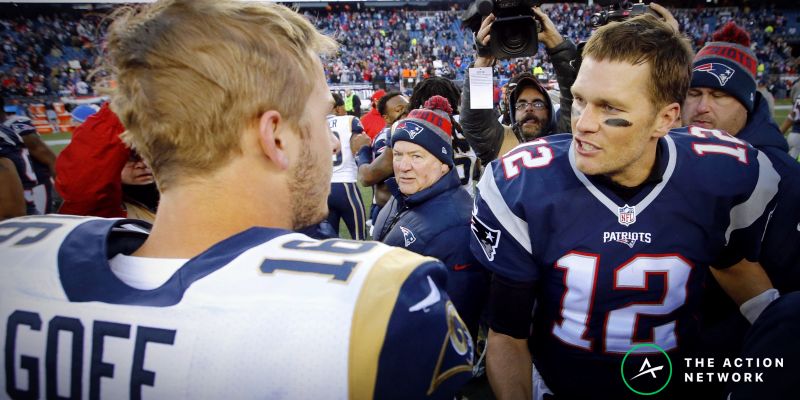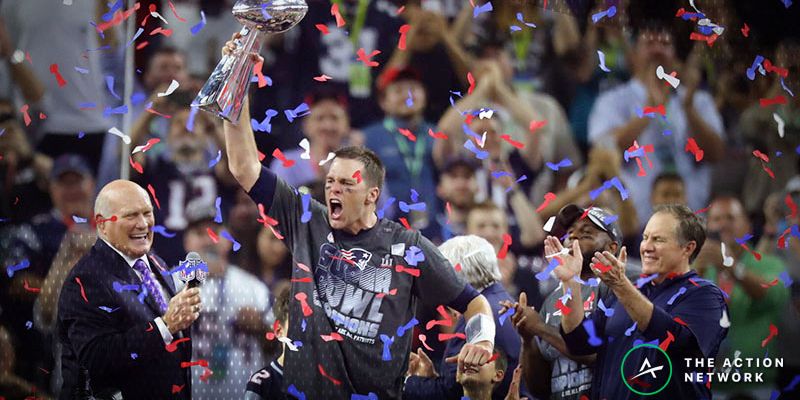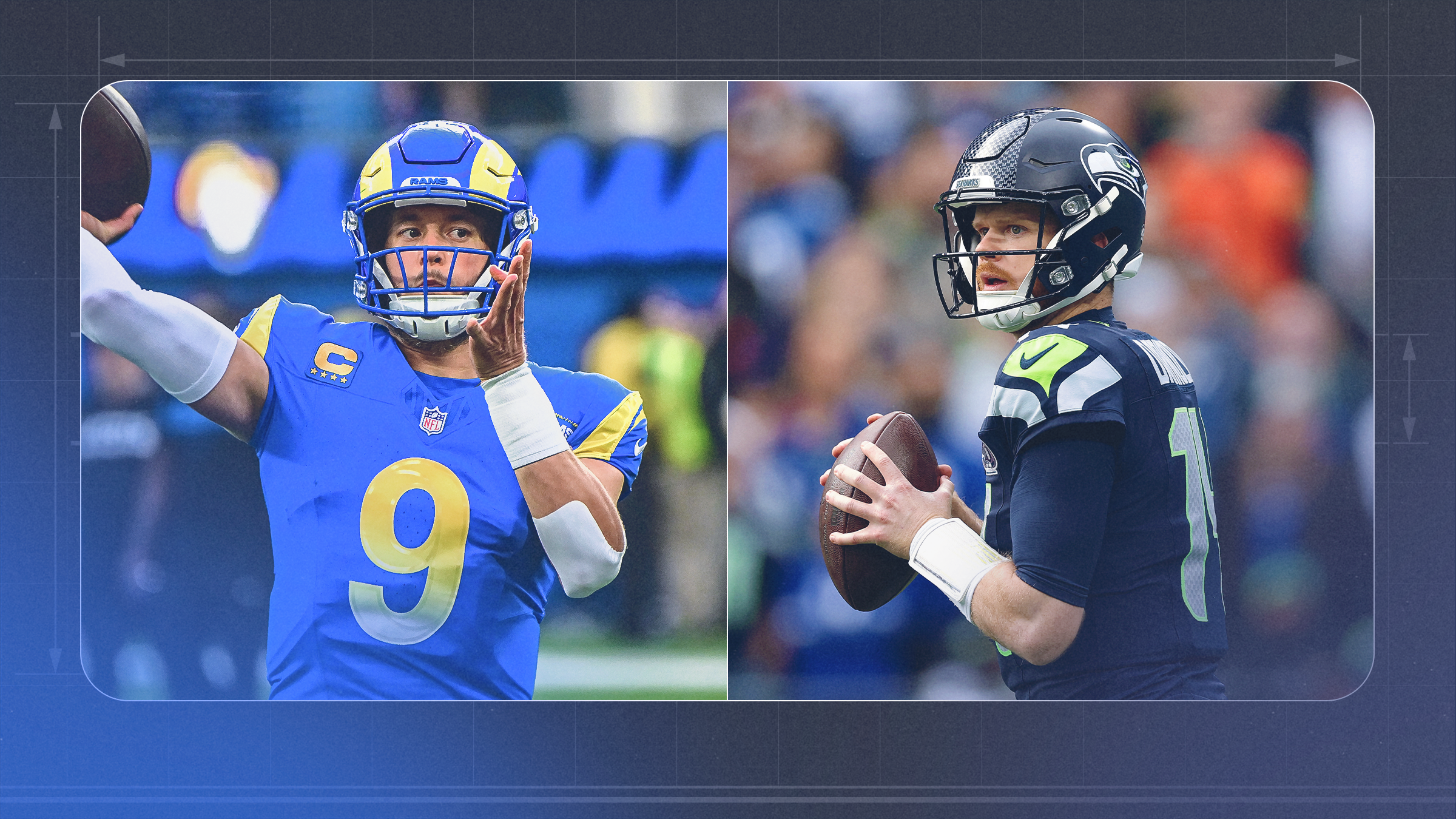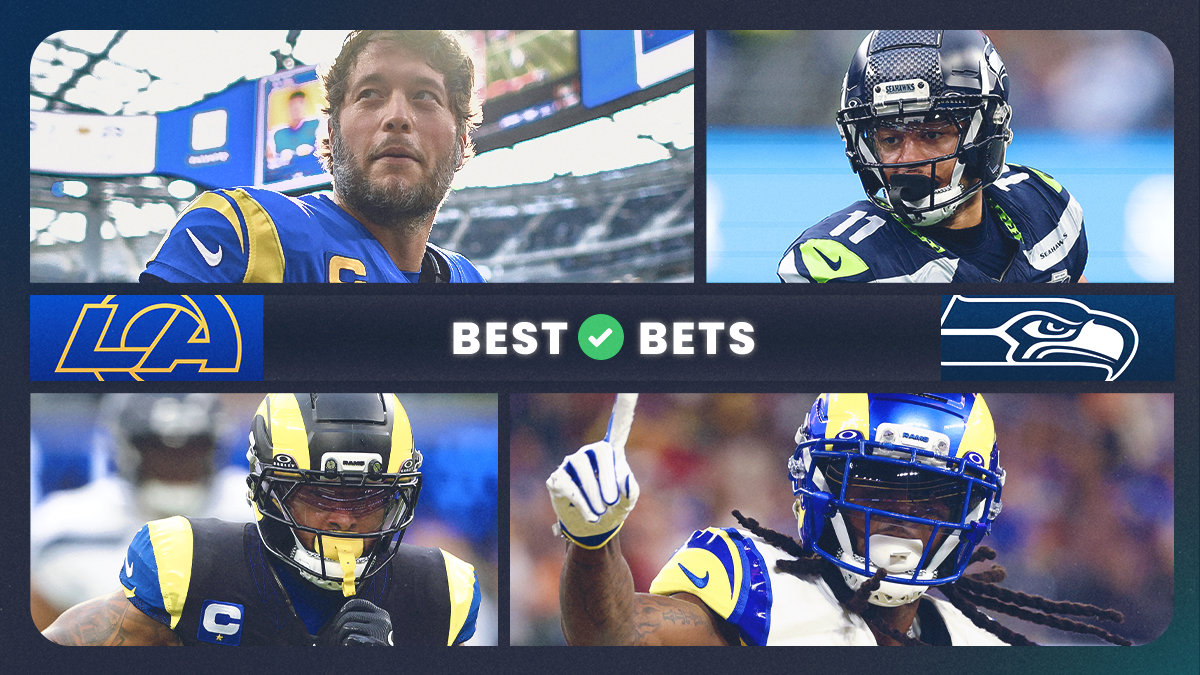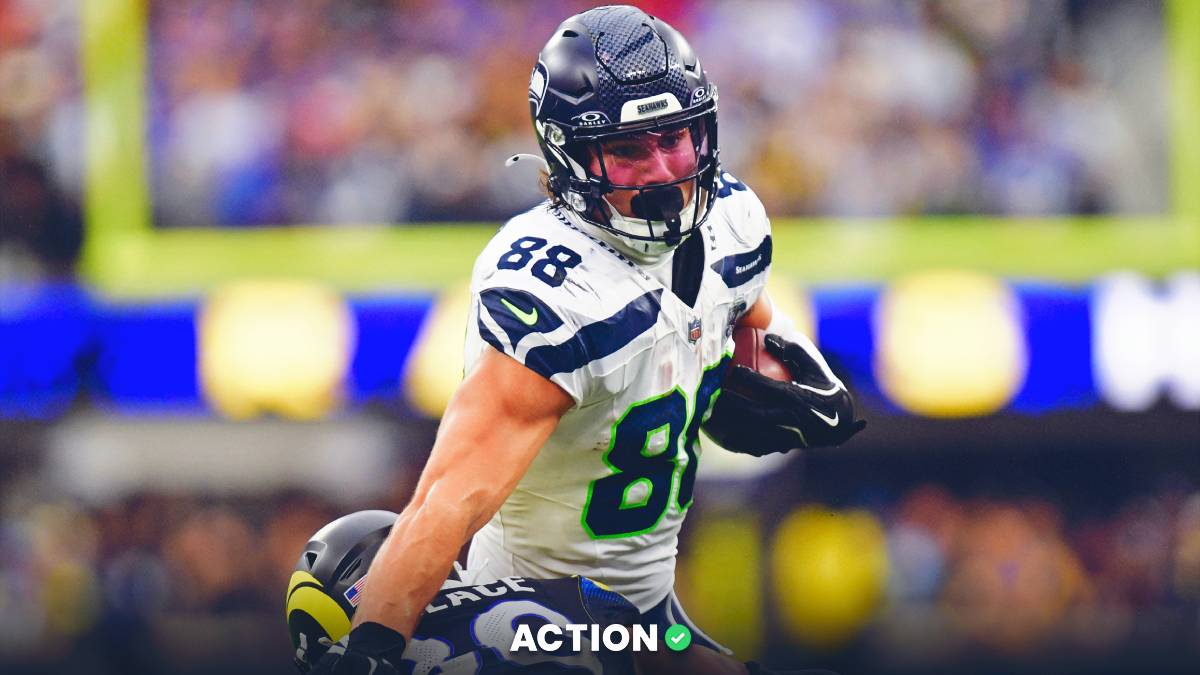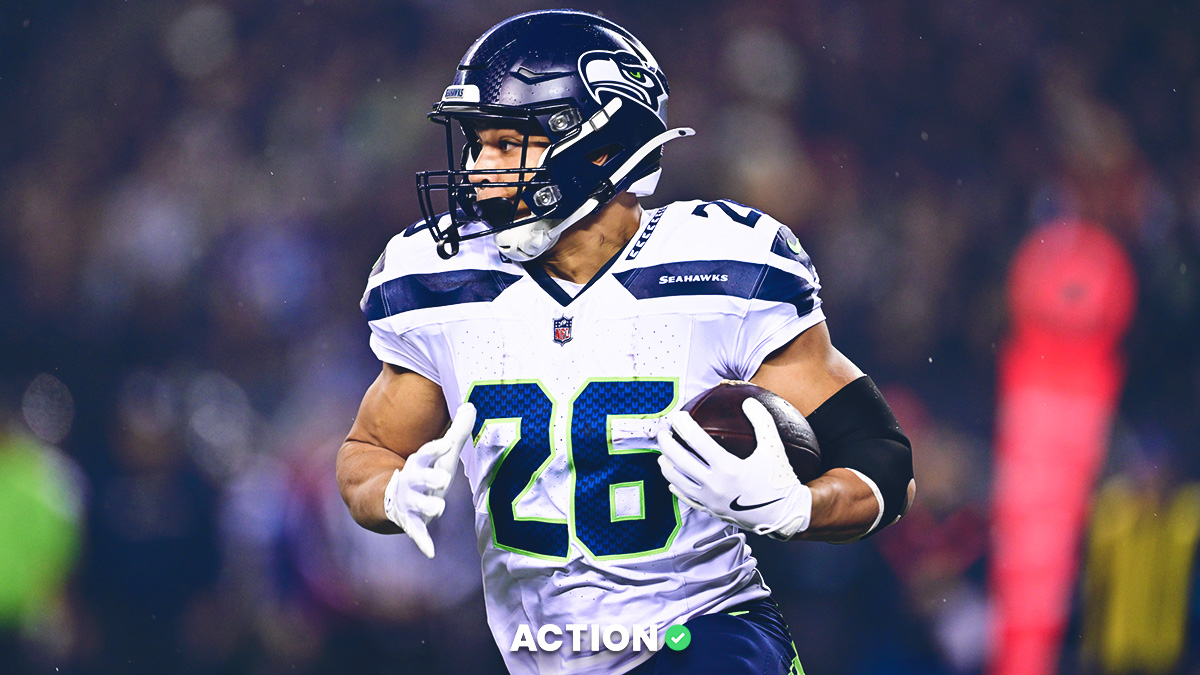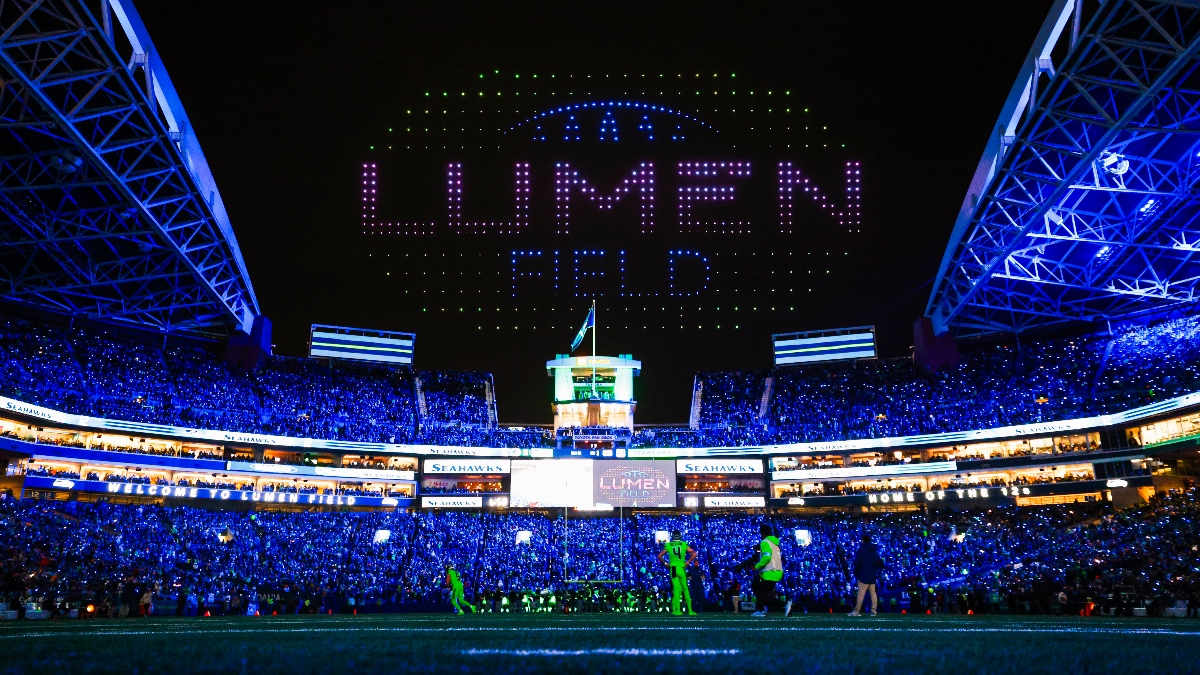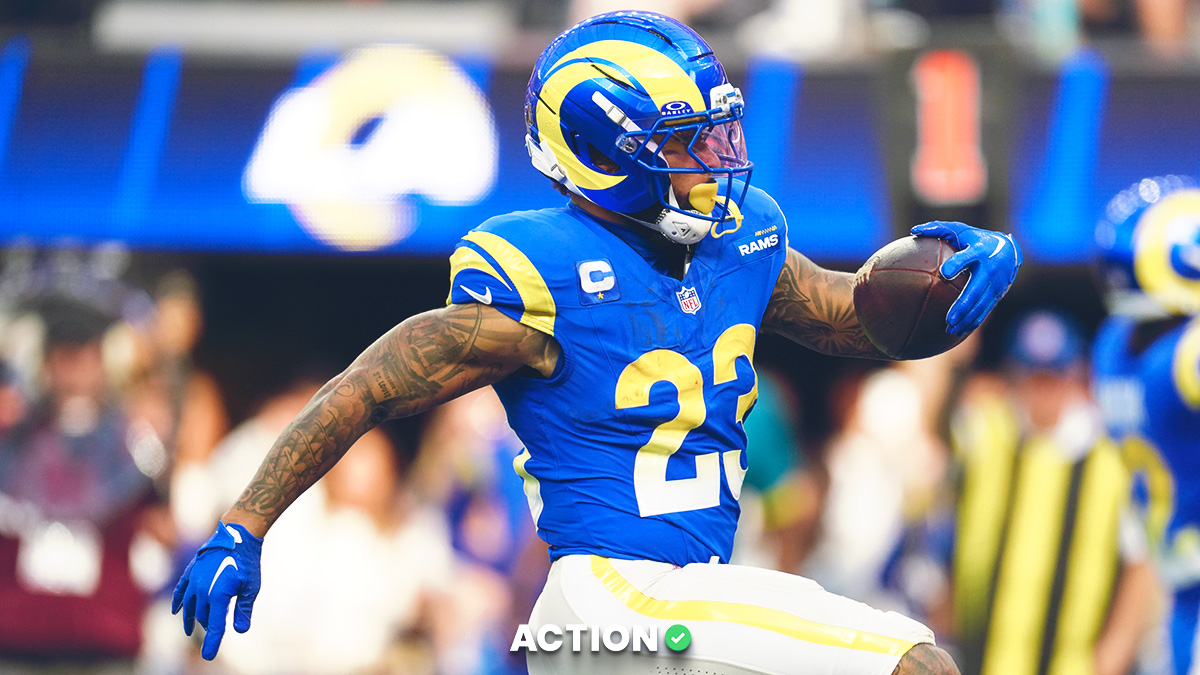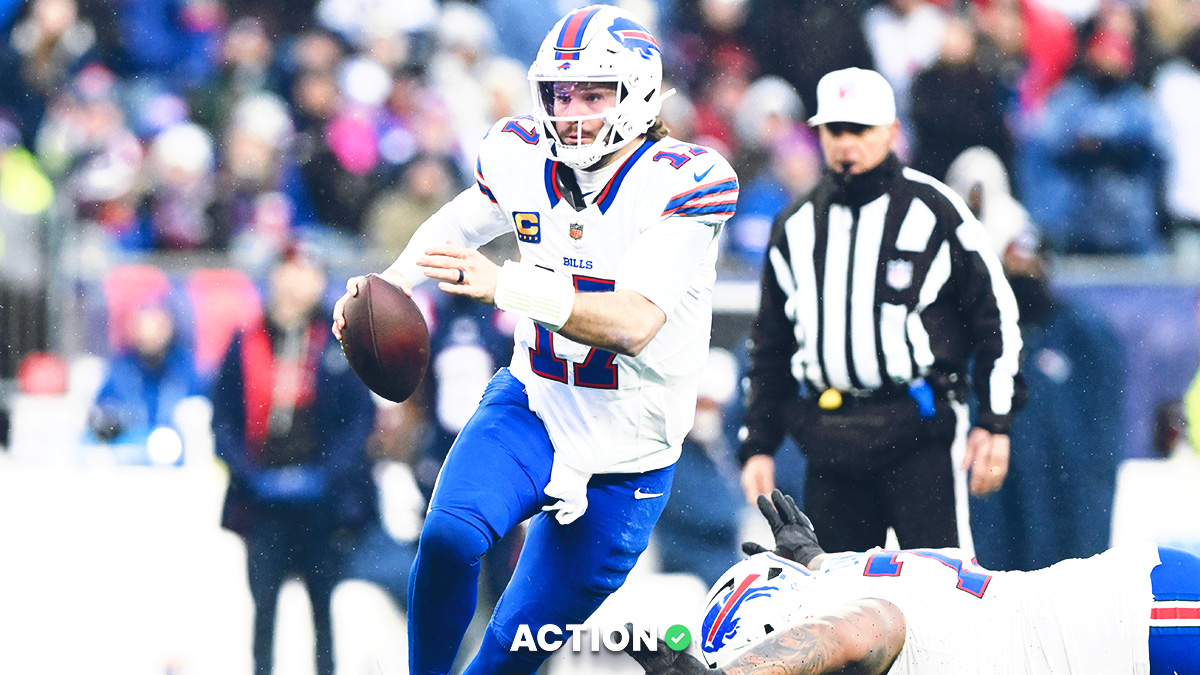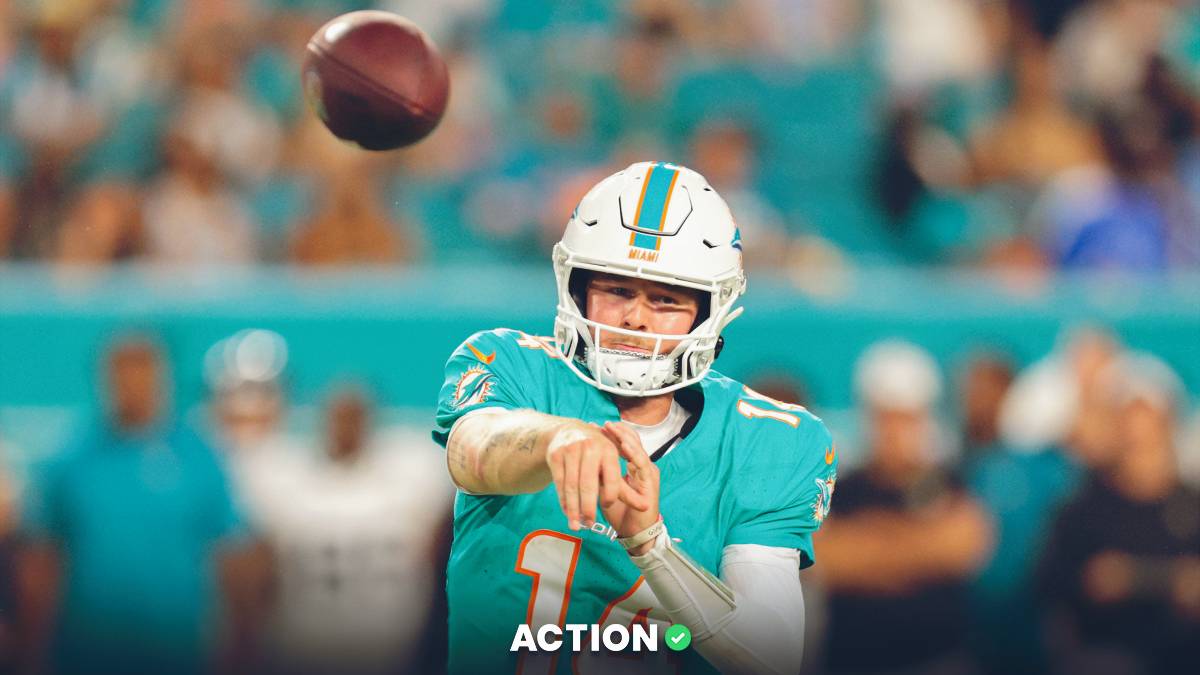- Ryan Collinsworth breaks down how to leverage our funnel defense ratings when setting your DFS lineups for Super Bowl 53.
- He identifies four Rams players, three Patriots players, potential stacks and more.
Our funnel defense ratings use advanced data to analyze situations in which teams are more likely to pass or run than they usually do. Let's start with a brief recap of the metric, then dig into our Super Bowl ratings and how to leverage them in DFS competition.
Funnel Defense Explained
Funnel defenses are successful at defending either the run or the pass, but not both. Strong funnel defenses are so good against either the run or the pass that they tend to "funnel" offensive play-calling toward their complementary weakness.
Measuring the Strength of a Funnel Defense
Using data to quantify the strength of a defensive funnel is complex. We must weigh several factors simultaneously:
- How good is a defense versus the running game and passing game? We employ Football Outsiders' DVOA metric to measure this.
- What is the difference between DVOA production defending the run versus the pass? If the differential is great, it would imply the probability of a funnel.
- How good is an offense in the running game and passing game? We can use DVOA here, as well.
- What is the difference between offensive DVOA production?
- What are the offense’s typical run/pass splits?
Our metric weighs each of these statistical factors and produces weekly matchup-based ratings for each NFL team.
Super Bowl Funnel Ratings: Patriots vs. Rams
While our funnel ratings have served us well throughout the season, we might not be able to rely on them for this particular matchup as New England and Los Angeles have proven themselves largely resilient to being funneled to either the run or the pass this season.
I performed a post-season "funnel-ability" analysis of every NFL team by correlating their pass-rate with their pass funnel rating for each week. The correlational coefficient for each team measures the strength of relationship between our pass funnel ratings and their resultant pass-rates across each game.
That analysis yielded some interesting results.
Teams that were most likely to be funneled by opposing defenses included:
- Chicago Bears (r=0.735)
- Baltimore Ravens (r=0.535)
- Oakland Raiders (r=0.502)
- Dallas Cowboys (r=0.430)
- Philadelphia Eagles (r=0.426)
Other teams not only refused to be funneled toward a potential defensive mismatch, but defiantly played right into the teeth of the opposing defense.
The top-five "contrarian" funnel teams this season included:
- Kansas City Chiefs (r= -0.576)
- New York Giants (r= -0.417)
- San Francisco 49ers (r= -0.385)
- Indianapolis Colts (r= -0.383)
- Minnesota Vikings (r= -0.342)
Throughout the season, we could use our pass funnel ratings to reliably predict potential game-script for each of the preceding groups of teams. The first group generally adhered to our pass funnel ratings while the second group opposed them — but both operated in a consistent orientation throughout the season.
However, there are also a few teams that reported correlational coefficients approaching zero. A coefficient around zero indicates no relationship whatsoever between pass funnel ratings and resultant pass-rate.
You want to take a wild guess at who were the top two teams in this frustrating category?
Yep. It's the Patriots (r=0.010) and the Rams (r=-0.022).
Perhaps these teams' resiliency to being funneled contributed in some way to their Super Bowl destiny. Who knows. What is certain, however, is that our funnel ratings don't hold predictive value in projecting game-script for either side this Sunday.
So, in lieu of an extensive matchup breakdown based on each team's funnel ratings, I will instead leverage our funnel ratings to tease out DFS value for specific players on each team.
I compiled game-by-game statistics for every offensive player on both teams and cross-referenced that data against team pass funnel ratings each week. I then correlated each individual's statistics with four opponent season-end matchup metrics that load on our funnel ratings formula: Pass offense DVOA, rush offense DVOA, pass defense DVOA and rush defense DVOA.
By correlating individual production with each of these component metrics, we can tease out strong statistical relationships based on game flow and matchup.
For example, let's imagine that a player's passing yards per game reports a strong correlation with opponent pass offense DVOA. That result implies that the player in question boasts improved performance when his team faces off against elite passing offenses.
One more example: Let's say that a player's rushing yards reports a strong correlation with opponent rush defense DVOA. That result implies that the given player is strongly influenced by rush defense matchup. In advantageous matchups, he excels. In difficult matchups, he struggles.
After performing this statistical analysis for all offensive players, four Rams players and three Patriots players reported very strong correlational relationships.
Los Angeles Rams
Jared Goff
Notable Correlation: Opponent Pass Offense DVOA
- Pass Attempts: r=0.71
- Passing Yards: r=0.76
We're starting off with a correlation that's fairly easy to understand. Goff's pass attempts and passing yardage increase when the opposing offense boasts an elite passing game.
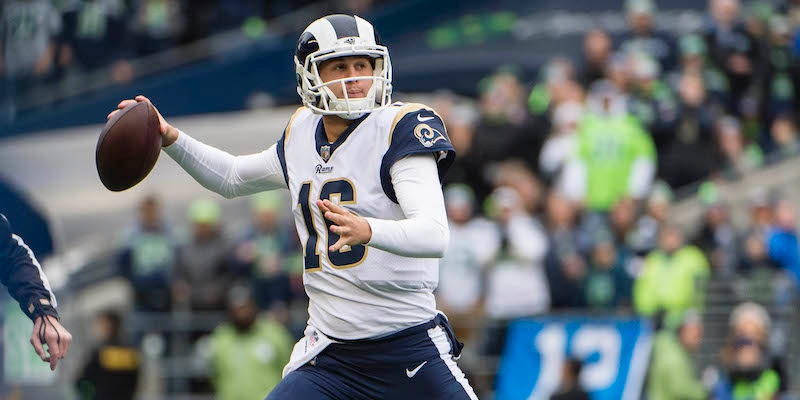
First, this suggests that the Rams' secondary is particularly vulnerable against strong passing offenses. In order for Goff's pass attempts to increase in such matchups, he likely must be required to throw based on game situation.
And what kind of game situation leads to this kind of air raid passing attack? A shootout.
This season, Rams opponents have averaged a pass offense DVOA of 14.79%. That mark serves as our baseline for an "average" passing output from Goff. The Patriots, however, boast a pass offense DVOA of 32.9%, which ranks fourth in the NFL.
New England's prolific passing offense poses a threat to the Rams' secondary and potentially elevates Goff's passing ceiling. His correlational coefficient suggests that he should throw more often and for more yardage against teams like the Patriots.
If this game turns into a shootout, Goff will likely benefit greatly. If instead this game turns into a slugfest, he could similarly suffer.
Brandin Cooks
Notable Correlation: Opponent Pass Offense DVOA
- Targets: r=0.83
- Receptions: r=0.68
- Receiving Yards: r=0.77
Let's assume, for the sake of argument, that you do believe that the Super Bowl will be a high-flying offensive shootout. Let's also assume that you've rostered Goff in your DraftKings Showdown lineup, and now you're looking to pair him with one of the Rams' wide receivers.
Look no further: Cooks is your man.
Importantly, his correlational coefficients versus opposing defensive metrics are essentially zero. That suggests that defensive matchup is inconsequential to Cooks' weekly output.
Instead, his production spikes drastically against teams with elite passing offenses. It seems that competitive game script largely determines his statistical output.
As noted in my analysis on Goff, the Patriots' offense ranks fourth in pass offense DVOA and easily eclipses Rams' opponents' season average. That bodes well for Cooks, who should make an excellent stacking partner with Goff if you choose that team build.
>> Sign up for The Action Network's daily newsletter to get the smartest NFL conversation delivered into your inbox each morning.
Josh Reynolds
Notable Correlation: Opponent Pass Offense DVOA
- Targets: r=0.62
- Receptions: r=0.74
- Receiving Yards: r=0.59
Then again, maybe Cooks is too pricey for your particular lineup and you're looking to save some salary cap space.
Reynolds could be a good fit for you.
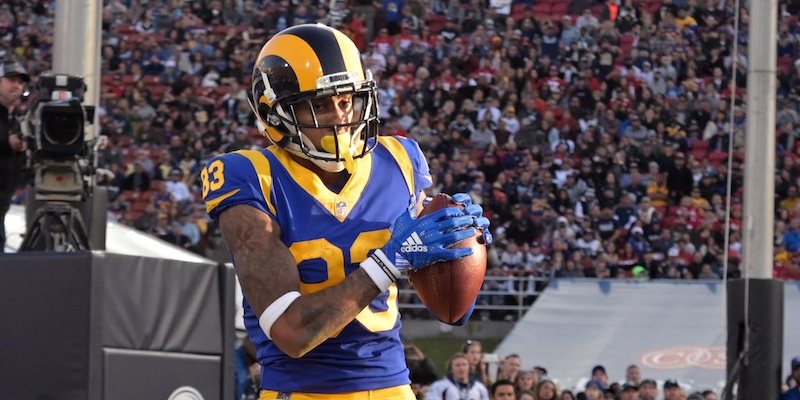
His correlational coefficients align perfectly with Cooks', though they are not quite as strong. Admittedly, Reynolds has been inconsistent this season, but he's flashed fantasy potential due to his touchdown equity. As a result, he could serve as a strong arbitrage option for Cooks, albeit with a markedly lower floor projection.
Robert Woods
Notable Correlation: Opponent Pass Defense DVOA
- Targets: r= -0.60
- Receptions: r= -0.53
Okay, enough with the Rams stacking stuff.
Say you're leaning the other direction on this game and expect the Patriots to mop the floor with the Rams — but you'd still like some exposure to the Rams' passing game with a high floor option. Woods potentially fills that role perfectly.
Unlike Goff and the other Rams receivers above, Woods does not boast a strong correlation with opponent pass offense DVOA. Instead, his strongest correlations are with opponent pass defense DVOA.
His correlational coefficients suggest that his target share is highly influenced by defensive matchup in the secondary. Interestingly, his negative coefficient reflects an inverse relationship between target share and defensive strength. Against poor pass defenses, his target share plummets. Against strong pass defenses, his target share increases markedly (although this has not translated to an increase in receiving yards per game).
The Patriots boast a pass defense DVOA of 5.1%, which is 2.46% better than Rams' opponents' season average. This suggests that Woods could be poised for above-average targets and/or receptions against New England.
Woods is the only Rams receiver with this particular kind of correlation. Consider rostering Woods as a potential bet against the other Rams players we've covered.
New England Patriots
Tom Brady
Notable Correlation: Opponent Pass Offense DVOA
- Pass Attempts: r=0.45
- Passing Yards: r=0.55
Like Goff, Brady's passing production is tied to opposing passing performance. However, Goff's correlations are far stronger.
This presents a kind of double-edge sword. On one hand, Brady stands to benefit less (comparatively) in a passing shootout. On the other hand, Brady's lower correlational coefficients potentially make him more resilient against downside risk if the game turns into a run-heavy grind.
The combination of these two factors suggests that he could be a favorable strategic play in cash games due to his potentially higher floor. Rostering him also works well in a contrarian strategy based on a low-scoring game.
Julian Edelman
Notable Correlation: Opponent Rush Offense DVOA
- Targets: r=0.68
- Receptions: r=0.49
- Receiving Yards: r=0.43
Okay, brace yourself for a weird one here.
Edelman's usage and yardage output increases when the Patriots face elite rushing offenses. I'll be honest: This result doesn't make a ton of sense to me. Nonetheless, I'll attempt to offer an explanation.
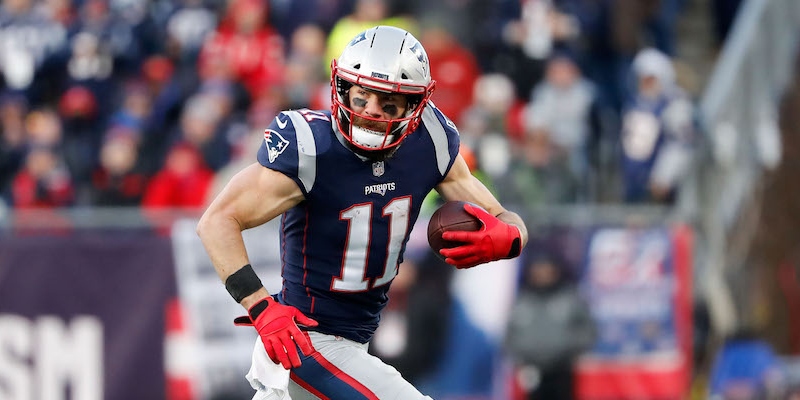
Elite rushing offenses might choose a run-heavy offensive strategy to shorten the game against New England. After all, the best defense against Brady is to deny him possessions. In that kind of game script, the Patriots are likely more than happy to nickel-and-dime their way down the field.
Perhaps that results in less urgency to take deep shots down the field, which in turn leads to more work underneath for Edelman.
The Rams famously boast the No. 1 rush offense DVOA in the league. If Edelman's correlational results are more than just noise, then he could be in store for a monster day against LA.
Rob Gronkowski
Notable Correlation: Opponent Rush Defense DVOA
- Targets: r=0.69
- Receptions: r=0.69
- Receiving Yards: r=0.71
Gronkowski's usage and yardage output increase when the Patriots face poor rush defenses. The Rams certainly qualify as a sub-par rush defense, as they rank a dismal 28th in rush defense DVOA.
This is another unexpected correlation to close the article, but once again I'll do my best to unpack it.
The way I see it, there are two possible explanations for this correlation.
Option 1: Poor rush defenses likely have to commit more defenders into the box to stop the run. In order to do this, they likely have to sub out nickel and dime packages in favor of more base looks. That could lead to mismatches for Gronkowski against linebackers with poor coverage skills.
We've witnessed this season that Gronkowski is no longer fast enough to contend with corners or safeties, but he might still be athletic enough to hang with a reserve linebacker.
Option 2: Game Theory. Bill Belichick, the mad scientist that he is, might flatly refuse to accept the obvious rushing mismatch presented to him. Instead, he might utilize play action — or even just the general threat of the run — to liberate Gronkowski in coverage. This option synergizes with my previous explanation.
It could be either of those options, neither or both. Who really knows.The Patriots are weird and unpredictable.
Nonetheless, Gronkowski's correlations are very strong. No matter the reason for this result, his matchup against the weak Rams rush defense suggests he could summon a "vintage Gronk" performance on football's grandest stage.


